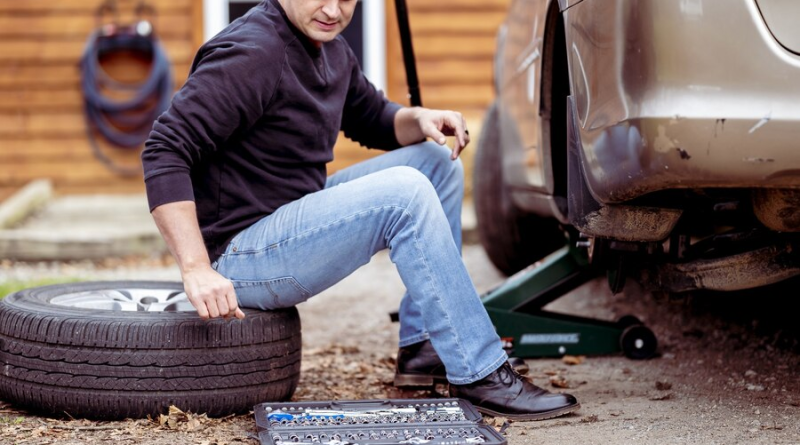5 Common Floor Pan Issues and How to Fix Them
Have you ever observed odd rust spots or water leakage inside your vehicle?
Maintaining the longevity, safety, and overall performance of your car depends on finding and fixing floor pan problems. The floor pan serves as the fundamental support and protection for the structure of your car.
When compromised, it can pose serious safety risks and require costly repairs. We’ll look at five typical floor pan problems in this article: water leaks, structural deterioration, rust and corrosion, insufficient soundproofing, and inadequate insulation.
In order to keep your car in optimal condition, each section will identify the signs of these issues and provide practical solutions. You can prolong the life of your car and improve your driving experience by being proactive and taking care of these problems early on.
1. Rust and Corrosion
Rust and corrosion develop in floor pans as metal surfaces are exposed to moisture and oxygen. Older vehicles or those that are frequently subjected to severe weather, including heavy rain, snow, or salty coastal air, are more likely to experience this problem. These substances accelerate the oxidation process, which causes the metal to deteriorate.
Symptoms:
- Visible rust spots
- Weakened metal
- Holes in the floor pan
- Water stains or a musty odor inside the vehicle
Solutions:
- Mechanical Removal: Rust can be physically removed with wire brushes, grinders, or sandblasting.
- Chemical Treatments: Rust is chemically neutralized by the application of rust dissolvers or converters.
- Rust Inhibitor and Sealant Application: Once rust is removed, rust inhibitors and sealants should be used to stop further oxidation and protect the metal.
- Replacement of Highly Damaged Floor Pans: Safety is an important consideration; if there is too much rust or corrosion, then you may have to change the entire floor pan.
2. Structural Weakness and Damage
Floor pans, like any other part of a car, can be prone to significant forms of structural flaws due to accidents, imposing weights or even due to manufacturing defects.
However, besides regular wear and tear from the usage of the car especially for loading and unloading bulky items, accidents can directly affect the floor pan.
Moreover, manufacturing defects, though rare, can also cause structural problems if the floor pan wasn’t properly reinforced or designed correctly.
Symptoms:
- Unusual noises (creaking or rattling)
- Flexing or sagging of the floor
- Misalignment of interior components
Solutions:
- Reinforcement Techniques:
- Welding: Sealing the cracks and welding metal plates to restore structural integrity.
- Adding Support Braces: Installing additional support to strengthen weak places and distribute weight equally.
- Proper Load Distribution and Avoiding Overloaded Vehicles: To avoid putting excessive stress on the floor pan, make sure the vehicle is loaded within its weight capacity and distribute the load evenly.
3. Water Leakage and Accumulation
Water gets into the car through various points like the door panels, window channel, or even through blocked sunroof drains. This water can accumulate in the floor pan area out of sight and cause several problems such as rusting, mold formation, electrical problems, etc.
Symptoms:
- Damp or wet carpets
- Signs of mold or mildew
- Water stains on the walls and floors
Solutions:
- Identifying and Sealing Entry Points: To stop water from getting inside the car, carefully examine and fix any damaged window, door, and sunroof drain seals.
- Ensuring Proper Drainage Systems are in Place: Sunroof drains and other parts of the drainage system of the vehicle should always be checked and cleaned to check on their efficiency and also to check on the accumulation of water.
- Regular Checks for Leaks and Prompt Repair: Perform scheduled checks to discover any areas that have been affected by water and fix them in order to avoid further deterioration and to keep interiors dry.
4. Insufficient Soundproofing
Floor pan soundproofing is another aspect that cannot be overlooked since it will help in the reduction of road noise as well as creating comfortable cabin ambiance. Lack of sufficient insulation may cause noise levels to rise inside the car, which interferes with the overall experience and comfort of passengers.
Symptoms:
- Excessive road noise, especially at high speeds
- Increased vibrations felt through the floor
- Rattling or buzzing sounds from the floor pan area
Solutions:
- Installing Sound-deadening Materials: Use mats or sprays to reduce noise transmission and absorb vibrations.
- Properly Fitting Carpets and Underlays: Ensure that carpets and underlays are correctly fitted and in good condition to help dampen sound.
- Regular Maintenance: Inspect and maintain soundproofing materials to ensure they are intact and functioning effectively. Replace any damaged or worn-out materials to sustain a quiet cabin environment.
5. Poor Insulation
Floor pans are crucial in insulating the vehicle from external temperatures, helping maintain a comfortable cabin environment, and improving energy efficiency. Poor insulation in the floor pans can result in extreme cabin temperatures, making it challenging to heat or cool the interior effectively.
Symptoms:
- High cabin temperatures
- Inability to regulate the inside temperature with either heating or cooling, even with HVAC in place
Solutions:
- Insulation Material Upgrades or Additions: To improve thermal efficiency, install upgraded or additional insulation beneath the floor pan.
- Ensure All Seals are Intact: Inspect and replace damaged or worn seals to avoid heat or cold air leakage and keep the cabin suitably insulated.
- Using Insulating Mats and Pads: Install automotive-grade insulating mats and pads to cover the car’s floor pan to enhance insulation and comfort.
Conclusion
Your ability to recognize and resolve common floor pan problems is crucial for maintaining your car’s longevity, comfort, and safety.
Identifying the symptoms and implementing the suggested fixes can ensure that your car stays in top shape.
Frequent maintenance and inspection are essential for identifying and fixing these problems early on, eventually making driving safer and more comfortable.
